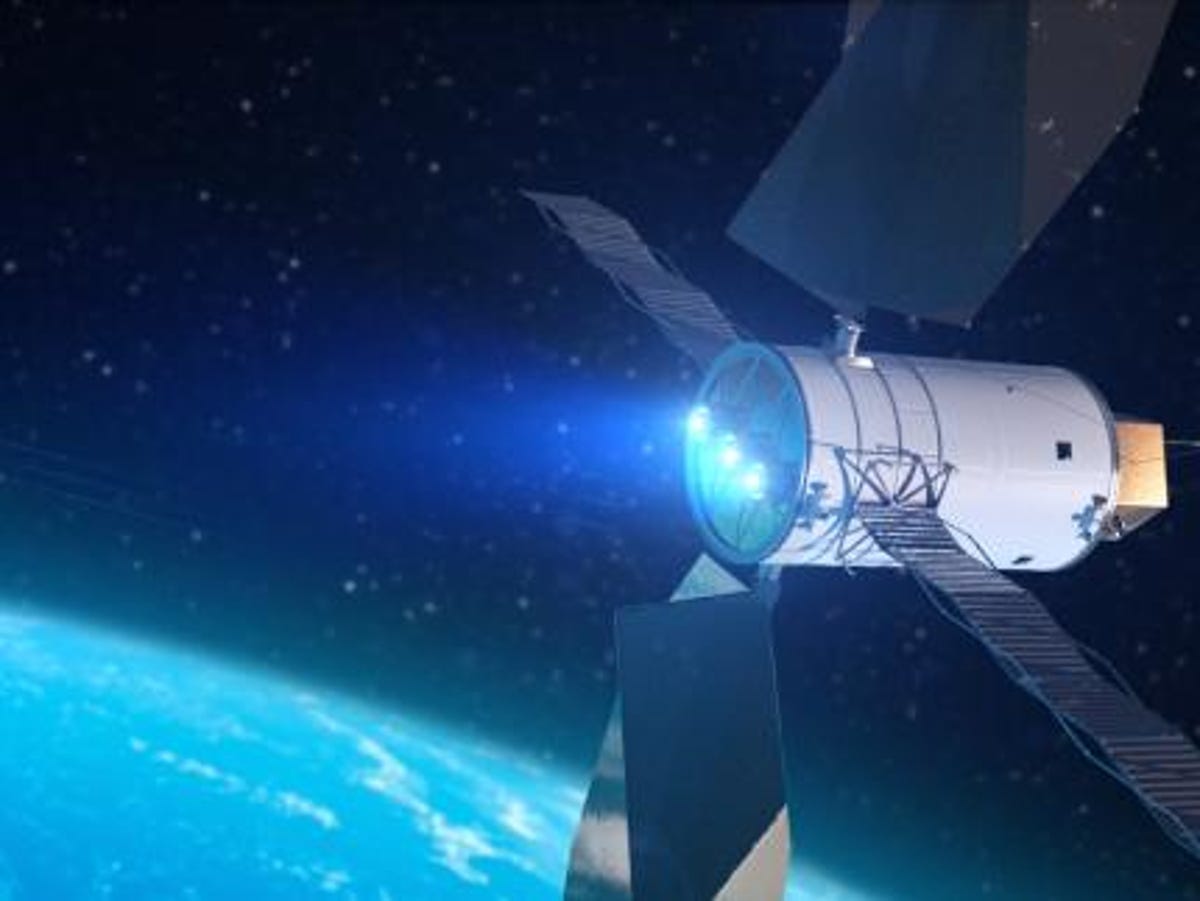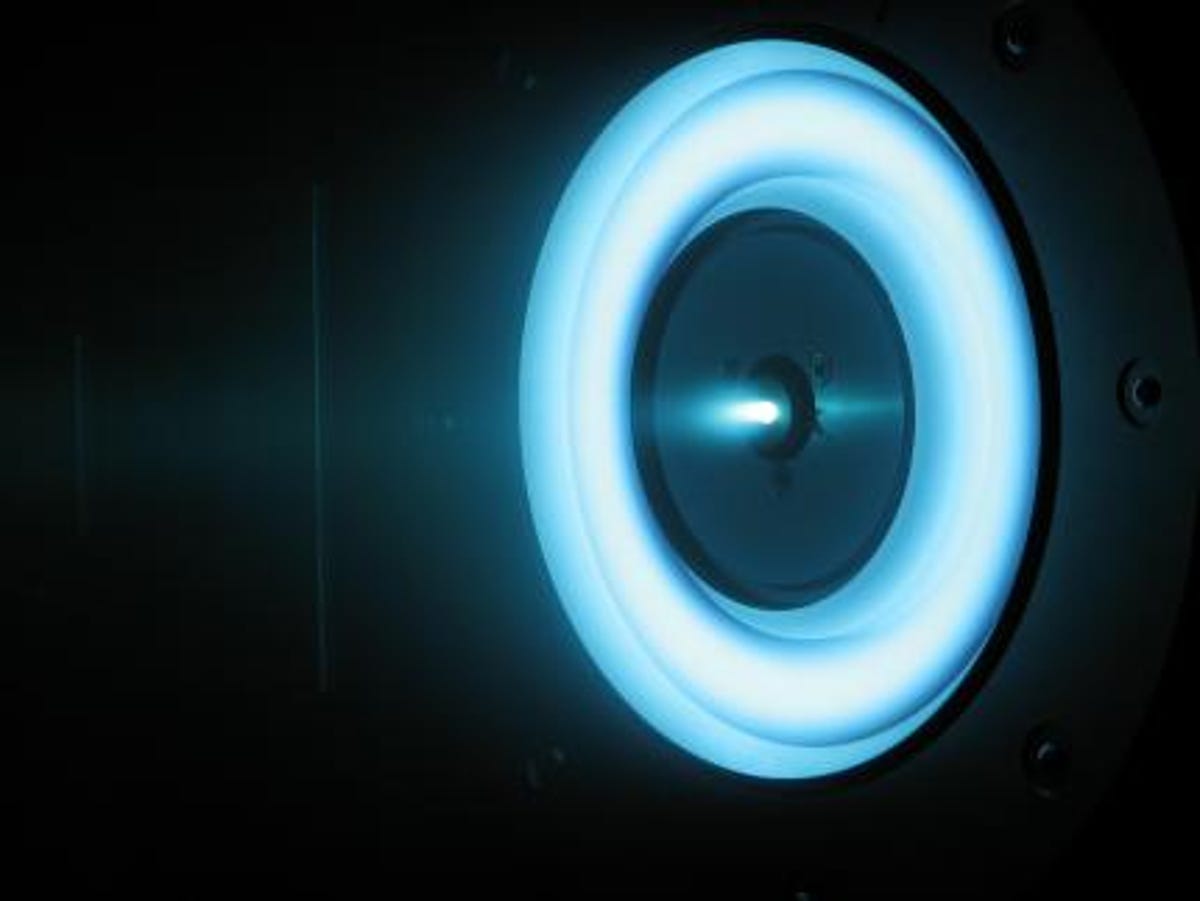Here's how you put an asteroid boulder in orbit around the moon (pictures)
NASA has a bold new plan to steal a boulder from an asteroid and bring it back for orbit around the moon, to help test an Earth-defense system.

Setting off
NASA just announced plans to send a robotic spacecraft called an Asteroid Redirect Vehicle to a nearby asteroid in the mid-2020s. Once there, it'll grab a boulder, bring it back and put it into orbit around our moon. The goal is to test out strategies to steer asteroids away from Earth should any come too close for comfort.
An additional goal of the mission is to test technologies that could aid future manned missions, including those to Mars -- such as the solar-electric propulsion system seen on this artist's impression of a craft employing such an engine (see next slide).

Fire the xenon engine!
A close-up of the solar-electric propulsion system (SEP) that would pilot the craft to a nearby asteroid. According to NASA, the system would convert sunlight to electricity which would in turn create charged xenon ions to move the ship. Though the system is slower than typical chemical rocket propulsion, NASA says it can "move massive cargo very efficiently." It also says the system uses much less propellant than typical rockets and therefore could help keep mission costs down dramatically.
This shot of the engine was taken through a porthole in a vacuum chamber at NASA'S Jet Propulsion Lab, where it's now being tested.
Scanning the rock
Once the Asteroid Redirect Vehicle is in orbit around the asteroid, it will scan it through a series of fly-bys just 1 kilometer (about six tenths of a mile) from the space rock's surface. The scans will help ground crews on Earth learn more about the asteroid.
At this point in the planning process, NASA says it doesn't know exactly which space rock it will visit for the project, but the rock will definitely be a near-Earth asteroid, which the agency says it's gotten 65 percent better at detecting since its asteroid initiative was started three years ago.
"An asteroid is coined a Near Earth Asteroid (NEA) when its trajectory brings it within 1.3 AU (astronomical units) from the Sun and hence within 0.3 AU of the Earth's orbit," according to the International Astronomical Union. An astronomical unit is roughly the distance from the Earth to the Sun.
Current potential asteroid candidates include: Itokawa, Bennu and 2008 EV5.
Descent
Once the asteroid has been analyzed, the Asteroid Redirect Vehicle will descend to its surface, as seen here.
"The option to retrieve a boulder from an asteroid will have a direct impact on planning for future human missions to deep space and begin a new era of spaceflight," said NASA Associate Administrator Robert Lightfoot in a statement.
Deploy the microspine grippers!
Once on top of the boulder on the surface of the asteroid, the robotic craft will attach to it using what NASA calls "microspine grippers."
"The microspines use thousands of small spines to dig into the boulder and create a strong grip," it says. "An integrated drill will be used to provide final anchoring of the boulder to the capture mechanism."
Jumping off
Once the grippers have dug their claws into the boulder, the spacecraft's "Capture and Restraint System" legs will push it off the surface of the asteroid, as if the craft were a giant insect. This allows the craft to take off without the use of thrusters, limiting the spray of debris.
Heading home
With the boulder safely attached, the Asteroid Redirect Vehicle will head back toward Earth to deposit the rock into orbit around our moon. NASA says it will take the craft about six years to accomplish this goal.
Defending Earth
Before the boulder is dropped into orbit around the moon, NASA will experiment with various ways of steering it around to help the agency figure out how to guide an asteroid away from Earth should one start heading toward us.
This illustration shows the Asteroid Redirect Vehicle employing the "gravity tractor planetary defense technique," on an asteroid big enough to harm our home.
"All mass exerts and experiences gravity and, in space, the gravitational attraction even between masses of modest size can significantly affect their motion," says NASA. "This means that by rendezvousing with the asteroid and holding a halo orbit in the appropriate direction, the ARM robotic spacecraft can slowly pull the asteroid without touching it. The effectiveness of this maneuver is increased, moreover, if mass is moved from the asteroid to the spacecraft by the capture of a boulder."
Rendezvous with a rock
Once the Asteroid Redirect Vehicle is in orbit around the moon with its boulder still in its grasp, NASA will send up its Orion spacecraft to dock with it. Orion is the spaceship NASA hopes will one day carry humans to Mars.
Rockin' out
To test methodology and technology, astronauts will explore the space boulder as it orbits the moon.
"This crewed mission will further test many capabilities needed to advance human spaceflight for deep-space missions to Mars and elsewhere, including new sensor technologies and a docking system that will connect Orion to the robotic spacecraft carrying the asteroid mass," says NASA. "Astronauts will conduct spacewalks outside Orion to study and collect samples of the asteroid boulder, wearing new spacesuits designed for deep-space missions."

